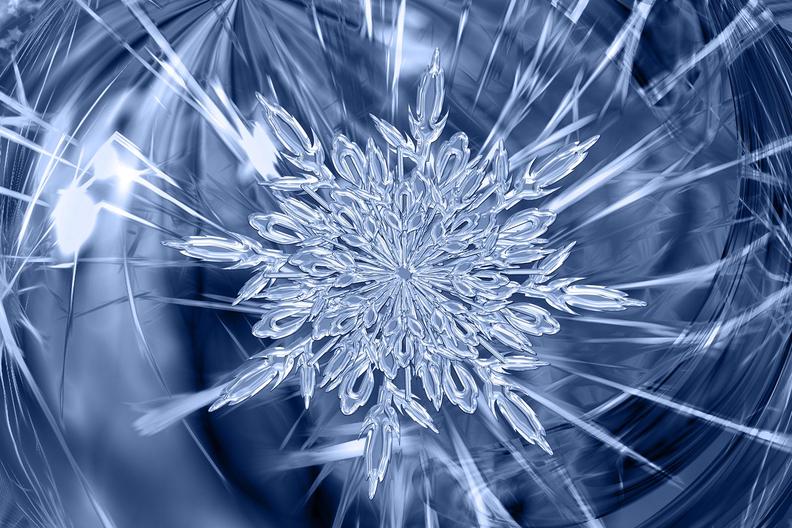"Watch the Video: Discovering 74,963 Types of Ice"

Ice is a complex substance with at least 20 known forms and potentially thousands more. The most familiar type is ice Ih, which has a hexagonal molecular structure and is found in the biosphere. Other forms of ice, such as ice III, V, VI, and VII, can be found in extreme conditions on icy moons in our solar system or even trapped in diamonds deep within Earth’s crust. The orientation of the water molecules within the ice crystal determines whether it is hydrogen-disordered or hydrogen-ordered. As more types of ice, such as ice XIX and ice XX, continue to be discovered, our understanding of ice and its various structures is continually evolving.
Water is a strange substance that can form a range of weird structures when it freezes, resulting in somewhere between 20 and 74,963 known types of ice. Researchers have experimentally determined the crystal structures for 19 types of ice. Notably, ice can occupy varying environments, ranging from icy moons to Earth’s depths and can have hydrogen-ordered or hydrogen-disordered molecules. Our fundamental understanding of ice is still evolving with new forms of ice such as ice XIX and ice XX to be further studied.
The structural complexity of ice belies its importance to life on Earth, driven by its hydrogen bonds. Ice exhibits properties that extend beyond its usual hexagonal molecular structure Ih, is less dense than liquid water, and has uses in refrigeration and snowflakes. The 20 known forms of ice have different structures and properties and appear in varying environments, from diamond reservoirs to the Galilean moons. The phases of ice at different temperatures and pressures, such as ice III, V, VI and VII, can expand our understanding of ice structures. The molecular structure of ice Ih can deform and take on other shapes if exposed to different temperatures or pressures. Thus, ice is an amazing subject of study as our understanding of its various structures continues to grow.
Transcript:
Ice is an intriguing substance, with its unique hydrogen bonds, which lead to weird properties such as less density when frozen compared to liquid water, which is crucial for life on earth. Despite its importance, ice is usually viewed as dull, but the truth is far from it. Ice has at least 20 known forms and potentially thousands more, strange and fascinating structures that range from ice Ih, with its hexagonal molecular structure, to ice III, V, VI, and VII found in icy conditions on other moons or even in diamonds. The molecular restructuring of ice results in hydrogen-ordered and hydrogen-disordered ice. As more types of ice are discovered, such as ice XIX and ice XX, our comprehension of ice and its various structures grows.
The various forms of ice are driven by the unique properties of water, leading to potentially thousands of forms when it freezes. The crystal structure of 19 types of ice has already been determined, and more are sure to surface. Ice forms in varying environments, from our solar system's moons to the deep recesses of earth's crust. The ice can have either hydrogen-ordered or disordered molecules. Our fascination with ice continues to grow with each new discovery.
Ice is far from dull, exhibiting properties beyond familiarity with its hexagonal molecular structure Ih. Its other forms offer different structures and properties, such as ice III, V, VI, and VII, which we can find in various planets' icy moons or within diamonds buried in the earth's core. These forms of ice can expand our understanding of the universe. Ice Ih can also deform and take on other shapes if exposed to varying temperatures and pressures. Research on ice continues to reveal its complexity and diverse structures.
The pressure in your bike tire is around 500 pascals. But imagine a pressure that is 2 million times more than that! That is a lot of pressure. At this level of pressure, ice III starts to form where the hydrogen bonds start bending and compressing. And as more pressure is applied, we get to see ice V with rings containing more and fewer water molecules than our regular hexagonal ice. Moving further ahead, we come across ice VI and VII. These types of ices, including I, III, V, VI and VII, are believed to be found on icy moons like Jupiter's moon, Ganymede.
On these moons, the layers of ice can be as much as a thousand kilometers thick, causing a lot of pressure on the bottom layers and resulting in different phases of ice. When ice undergoes such changes in density, we call it a density-driven transition. Interestingly, we can find ice VI and VII in diamond inclusions deep inside the Earth's crust. Hence, these types of ices have also been referred to as minerals. They can also indicate the presence of water deep inside the Earth's mantle and might also lead to ice quakes caused by friction between earth's slabs.
Coming back to the structure of ice VI, it is composed of two sublattices that fit inside one another without being connected. There are no hydrogen bonds between the two, so they just "nestle" together. These "nested" ices are still hydrogen-disordered, which means that the center water molecule could be oriented in any direction. However, there are some ices that are hydrogen-ordered, where favored configurations for the hydrogen dipole exist rather than just random ones.
There are six pairs of hydrogen-ordered and hydrogen-disordered ices, which can be found by cooling down many of the ices we talked about earlier. During this process, they go through an entropy-driven transition, where lowering the temperature results in a decrease in entropy and an increase in order. For instance, we have ICE XV as an ordered form of ice VI. Another new addition to the lineup is ice XIX, which was first described as an ordered form of ice VI called ice beta XV. However, newer work suggests that it may be a distorted version of ice VI and might form at higher pressure.
The boundaries for some of these types of ice are controversial and still being researched. Nevertheless, the science behind these fascinating forms of ice is truly incredible.
But you can even look for structures that don’t fit on this graph.
We are talking about some really weird conditions.
So for example, if you take ice VII and you compress it to 50 to 300 gigapascals, you can get to ice X.
And ice X is strange because the water molecules aren’t even water molecules anymore because the hydrogen bonds become symmetrical between the oxygen that you cannot assign a hydrogen to a single oxygen anymore.
(Alex inhales deeply)
And if you heat it to over 2,500 Kelvin, it doesn’t melt. Instead it turns into ice XVIII, which undergoes super ionicity where the oxygen stay in a lot of structure and the hydrogens just kind of move around them.
Now this hydrogen mobility means that ice XVIII may be as conductive as some metals and it is possible that ice XVIII is hanging out in the center of really dense and hot planets like Uranus and Neptune.
And there’s also another super ionic form of ice described in October 2021 that is angling for the title of ice XX.
And look, we’ve been looking at most of these as like ball and stick models so far, but we can also look at them as 3D structures like this.
Here you can see that ice Ih and ice II both have what’s called these open channel structures. That’s really obvious there.
While in ice XVI, you can much better see those expanded clathrate cages that I talked about before.
Here, it is easier to see how pressure can really deform the structures to create things like ice V and VI and VII. They are clearly much more dense than ice I.
Additionally, this diagram only shows these stable forms of ice while there are also metastable phases like ice IV and ice XII.
Disordered forms of ice that only exist in small intermediate conditions, which is why they just don’t have a stable position here on our graph.
But there’s also amorphous ice.
Amorphous ice doesn’t have a long range order to its structure often because it has been cooled so quickly that there just wasn’t time for a lot of structure to form.
There’s no nice order like any of these that goes on forever. It’s just like water molecules randomly arranged kind of like liquid water, which is why it’s called amorphous ice.
It’s actually the dominant form of water in the universe, as far as we know. No one’s out here measuring every single chunk of ice.
But amorphous ice occurs on things like interstellar dust and in places like Saturn’s rings.
There is a lot of it out there.
So much in fact that it might just deserve a video of its own.
Let us know.
Do you wanna know about amorphous ice? I do.
So is that it? Do we just stop at 20-ish phases of ice and call it a day?
Absolutely not.
In fact, a recent computational study found the potential structures for 74,963 types of ice.
So no, science is not done with ice structures, but to name a structure to add to that Roman numeral list, you have to experimentally show the crystal structure.
And so for now, we’re still waiting on ice XXI.
But here, I think, our scientists disagree, so I’m also gonna do a take with ice XX.
And so for now, we’re still waiting on ice XX.




